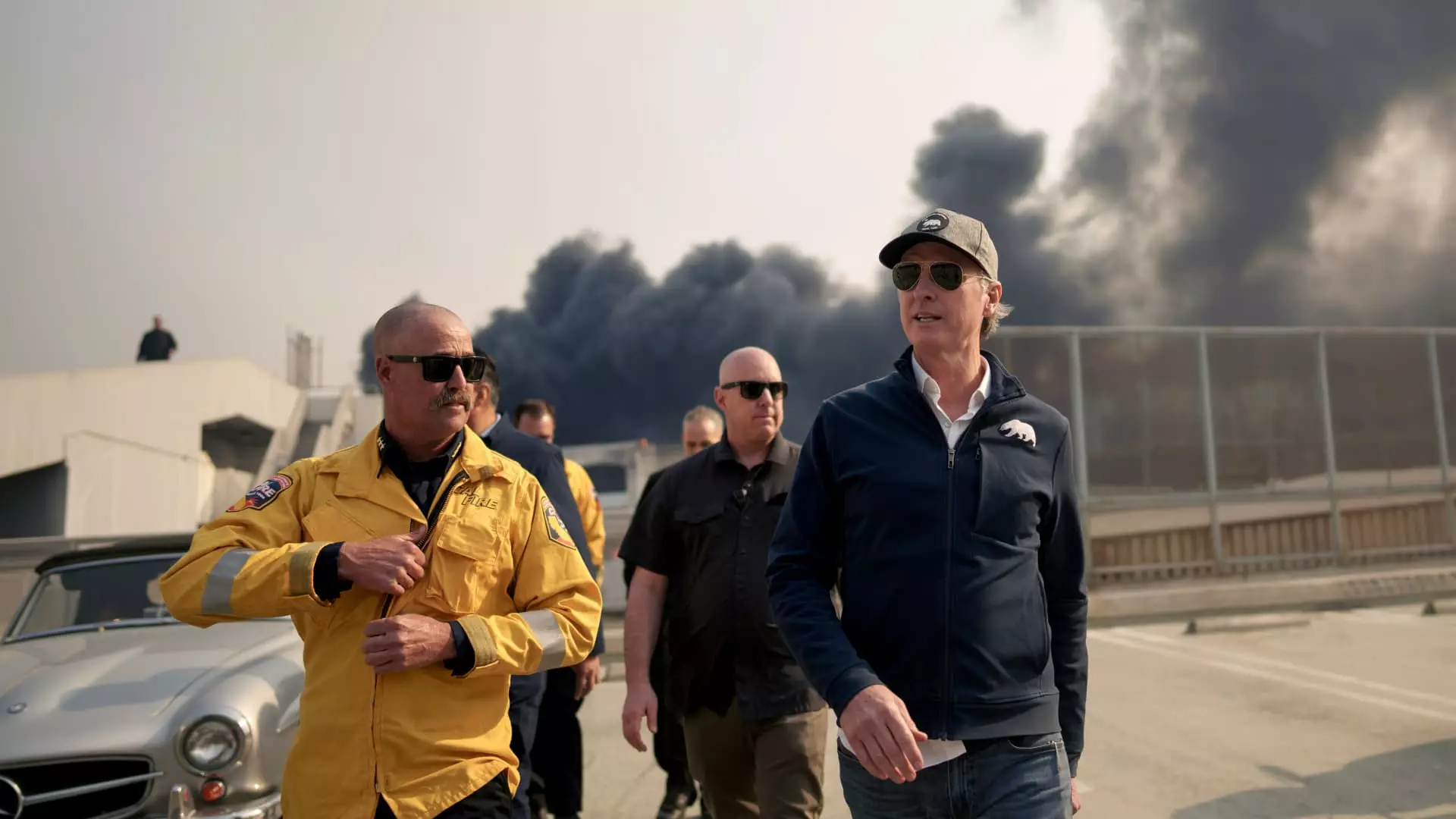California has long been plagued by devastating wildfires, a consequence of both natural conditions and human contributions to climate change. As the flames rage, the political landscape often becomes as contentious as the flames themselves. Recently, California Governor Gavin Newsom found himself embroiled in a public spat with President-elect Donald Trump over the federal response to these calamities. Their disagreement underscores the complexities of how political leaders communicate during crises, and the implications of misinformation amidst such tragedies.
In an interview on NBC’s “Meet the Press,” Newsom openly criticized Trump’s rhetoric regarding the wildfires, particularly focusing on the misinformation being disseminated on social media. Trump’s claims suggested that Newsom had refused to allow water flow from Northern to Southern California, alleging that environmental protections for the delta smelt were to blame for the fires. Newsom vehemently rebuffed these assertions, emphasizing that Trump’s narrative was not only inaccurate but also morally irresponsible. Labeling Trump’s comments as “mis- and disinformation,” Newsom pointed out the danger of conflating complex environmental policies with the tragic consequences of wildfires.
This situation exposes a critical issue: when leaders misattribute blame during natural disasters, they undermine public understanding and trust. The delta smelt, often cited in water conservation debates, has become a scapegoat in this political exchange, redirecting attention from the systemic failures of water management and climate policy that contribute to such disasters.
Both leaders utilize the media to project their narratives, but their tactics diverge significantly. Trump’s posts on Truth Social exemplify a confrontational and often derogatory approach. By using nicknames and insults, he reduces serious discussions about environmental policy to personal attacks. For instance, referring to Newsom as “Governor Gavin Newscum” serves to demean rather than inform. It highlights a broader political strategy where personality often trumps policy, distorting public focus and potentially engendering divisiveness during crises that require unity.
Conversely, Newsom’s invitation to Trump to visit California represents an effort to foster dialogue and build understanding. His appeal to empathy—encouraging Trump to witness the destruction firsthand—is significant. It reflects an understanding that sight can invoke emotional and political responses that mere words cannot. Here, Newsom calls for recognition of the human toll wrought by the wildfires rather than allowing the conversation to devolve into finger-pointing.
One of the most concerning aspects of this political clash is the looming threat of federal disaster aid being withheld from California due to ideological conflicts. Newsom raised alarms about Trump’s history of leveraging federal assistance as a political tool, recalling incidents where Trump withheld funding during disputes with state leaders. The potential repercussions of such actions are grave, especially as public services and recovery from disasters heavily rely on these funds.
By reflecting on Trump’s past behavior towards disaster-stricken states, Newsom highlights a troubling pattern: federal aid becomes a negotiation chip in political games rather than a humanitarian necessity. In this light, the urgency of making resources available to communities impacted by wildfires cannot be overstated. The interplay of politics and disaster relief demands greater accountability from elected officials.
As California navigates its current crisis, the lessons learned extend beyond state lines. Effective communication and responsible leadership are crucial in times of disaster. While political disagreements are inevitable, they should not eclipse the need for constructive dialogue focused on helping those affected. Accountability in narratives shared by leaders and an emphasis on factual information are essential to fostering trust within communities and progressing towards meaningful solutions.
The fiery rhetoric exchanged between Newsom and Trump during California’s wildfires serves as a microcosm of the broader political climate. It emphasizes the dual imperative of combating misinformation while ensuring that disaster relief remains untethered from partisan disputes. As the fires burn on, the hope remains that leadership can rise above the fray to prioritize the welfare of Californians in their hour of need.


Leave a Reply